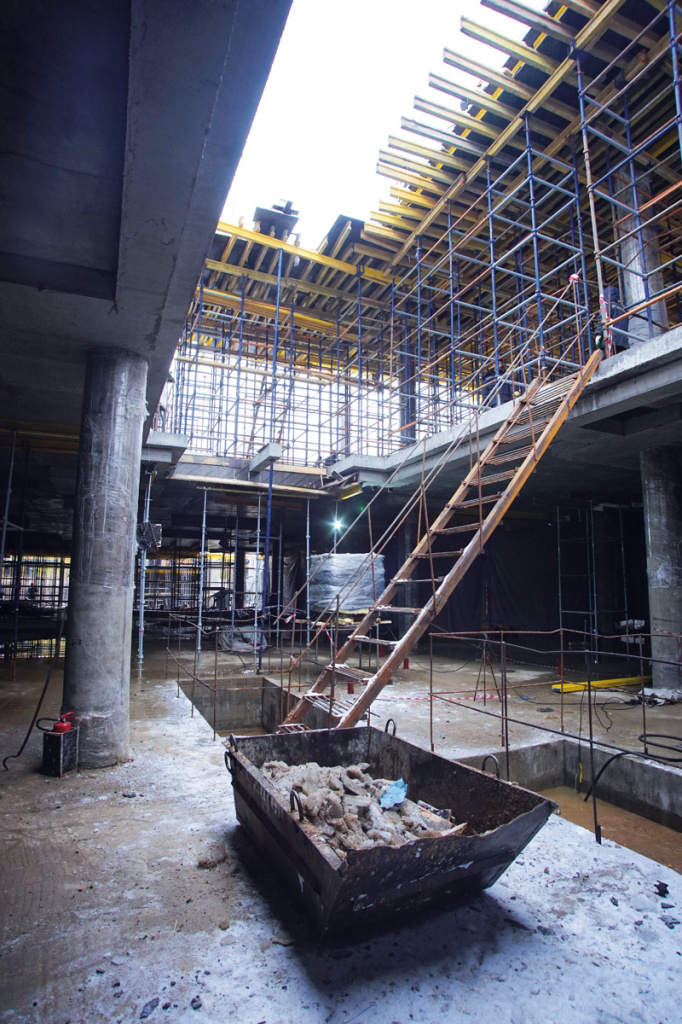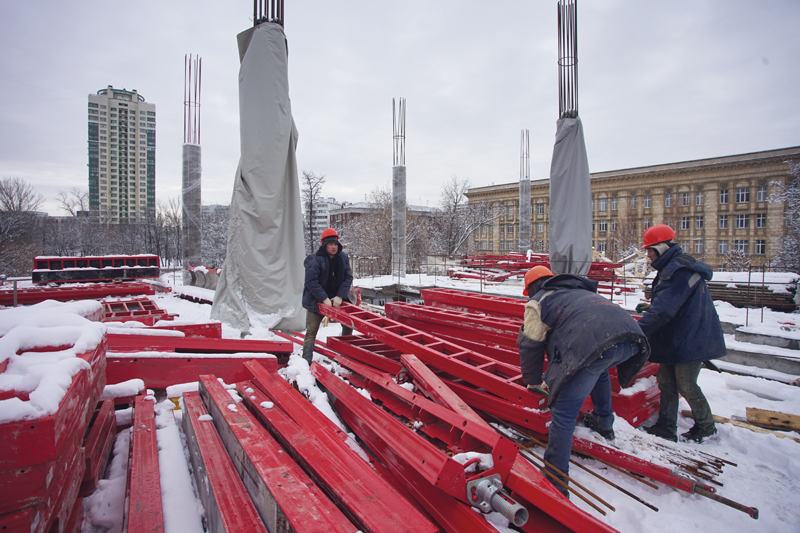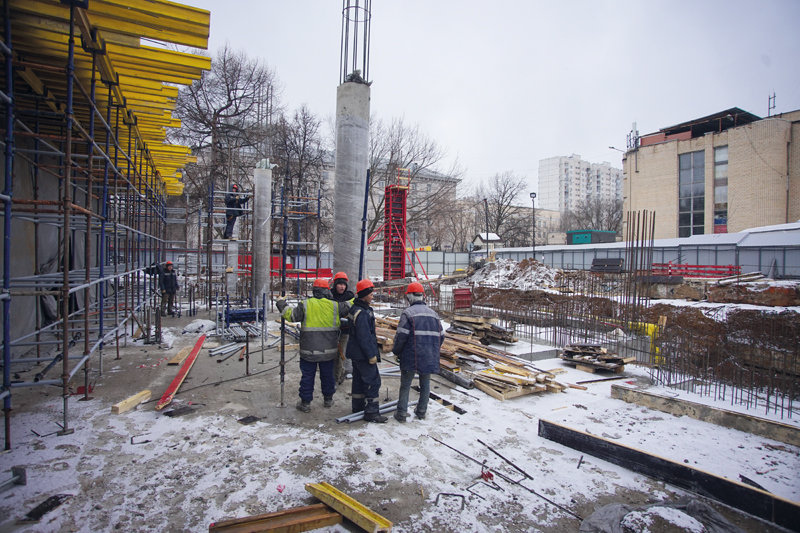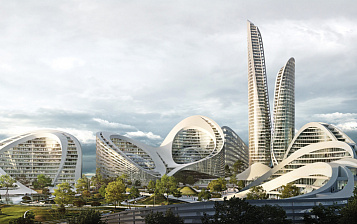The impact of climate change, which seems to have accelerated in recent years, will still require detailed scientific analysis. We will try to sum up the preliminary results of the incredibly snowy winter of 2021 - according to RAS estimates, a record one for half a century! A year ago, in an article about the potential impact of “global warming”, we already wrote that in the case of Russia, one cannot literally understand the word “warming”. As always, our climate, following history, goes "its own way", only increasing its extremeness. Moreover, the largest accident case of Norilsk Nickel’s CHP plant in 2020, in which they initially tried to blame “melting permafrost” (and in the end they discovered the traditional Russian carelessness in maintaining complex facilities), raised the question again (worth from 146 billion rubles! ), who can cause more harm - nature or man. Maxim Kirsanov, a special correspondent for the Gorproekt magazine, listened to the arguments of the construction industry experts in order to try to understand this riddle.

Is it possible to build high quality SUCH winter?
 After many months of “lockdowns”, the domestic economy could not afford large downtime, therefore, despite the record low readings of thermometers, construction was especially active this winter. The exception was housing construction in Central Russia (including Moscow and St. Petersburg, which are constrained by new regulation through escrow accounts and project financing). Industrial, commercial, warehouse and road construction seems to be able to recover. Deputy Prime Minister Marat Khusnullin has already promised to build and repair more than 23,000 kilometers of bridges and roads in a year, compared to 18,500 in 2020. The pandemic has not buried the shopping industry either, despite apocalyptic forecasts: according to Cushman-Wakefield, 600,000 sq. m of commercial real estate.
After many months of “lockdowns”, the domestic economy could not afford large downtime, therefore, despite the record low readings of thermometers, construction was especially active this winter. The exception was housing construction in Central Russia (including Moscow and St. Petersburg, which are constrained by new regulation through escrow accounts and project financing). Industrial, commercial, warehouse and road construction seems to be able to recover. Deputy Prime Minister Marat Khusnullin has already promised to build and repair more than 23,000 kilometers of bridges and roads in a year, compared to 18,500 in 2020. The pandemic has not buried the shopping industry either, despite apocalyptic forecasts: according to Cushman-Wakefield, 600,000 sq. m of commercial real estate.
The question arises whether the pursuit of quantity and cherished square meters (which the president has yet to report on) will end in a drop in quality - traditionally the most controversial variable in the Russian construction industry. Especially in conditions when for several months the weather throughout the country pleased with a deep minus in the region of 20 degrees below zero. The general director of the St. Petersburg PSK Group of Companies Yuri Kolotvin, answering a similar question, noted that it is important to consider: “Anti-frost additives work up to -10, below this temperature it is problematic to prepare solutions of proper quality.” Most of the facade work, wall laying, all kinds of external “wet” processes, actually stop. SANY Heavy Industry experts, who have been working in Russian frosts for 20 years, note that during the construction of stadiums for the 2017 World Cup, Russia and Eastern Europe were already covered by record frosts. As in this year, even in southern Volgograd it froze to minus 25. “And then, by experience, we found that modern concrete pumps deliver concrete perfectly even at -16 degrees (subject to warming up for controlled curing),” Anton Kudryavtsev clarifies, representing SANY on the Russian market. “At such temperatures as now, at -20 and -25 degrees, monolithic work is rarely carried out, but assembly and disassembly of building structures can be done well. This is how SANY cranes operate in Vladivostok, Yakutia and Ust-Ilimsk at temperatures down to minus -50.”
The most common method of construction in harsh winters, as well as rainy-windy off-season, remains frame-tent structures (“greenhouses”) and windshields. If the former largely ensure the success of federal transport bridge construction (although they are also used in other areas from the famous palace-hotel in Gelendzhik to metro facilities in Moscow), then the gradual, if not slow, spread of the latter may be holding back the growth of housing construction, which we mentioned earlier… But, where this technology has taken root, conditions have arisen for a record breakthrough in high-rise construction. In less than 10 years, the supply of apartments in new high-rise buildings has grown 30 times. In 2020, a record number of high-rise real estate was introduced in the capital (data from the Capital Group press release): 862 thousand meters in houses above 130 meters (against 540 thousand in 2018 and 200 thousand in 2016).

According to Vladimir Resin, the honorary builder of Russia, the current Master Plan for the development of the city could lead to a compromise between the defenders of the historical center and developers. The former defended the "skyline" inside the Garden Ring, and the latter were able to bring almost all other areas of the capital to the American metric, when the skyscraper segment includes not just multi-storey 30-story buildings from 100 meters, but high-tech complexes with unique architecture that set the style for the entire street, and a height of 150 meters. The symbol of this division of the city will be the first (if we forget, like a bad dream, the controversial business center "Arms") skyscrapers on the Garden Ring of the Chkalov complex near the Kursk railway station. Then high-rise office centers of Russian Railways will join on the former sidings of the Riga and Belorussian directions. Despite the enormous difficulties in preparing their foundations in the metro, dotted with tunnels and other communications in the historical center, it was in the fierce winter of 2021 that both projects began to rapidly “gain height”. As you can see, it is possible to build even when the weather reports resemble front-line ones.
Why do emergencies always happen in winter?
The question arises, if everything is so good, then why do regular emergencies still occur in winter? A recent case is the collapse of forests on Lubyansky passage in Moscow, which for some time paralyzed transport around Kitai-Gorod. The scaffolds that fell on people were standard collar scaffolds, similar to those with which the reconstruction of Gostiny Dvor for the Kremlin Museums and tens of thousands of other objects across Russia is now being completed. Does the case when a few additional “tons” of snowfall can bring down a multi-storey structure mean that safety standards should be revised taking into account weather anomalies? For an answer, we turned to a company that produces an alternative to “clamp” scaffolding (steel tubes connected by simple locks) - PromStroyKontrakt Group of Companies , which has long been promoting the transition to voluminous cup scaffolding (the patented system “PSK-Cup”) and industrial wedge scaffolding (“PSK- scaff"). Development Director of PSK Group of Companies, Honorary Builder of Russia R.A. Chinaryan is not inclined to "bury" competitors, despite their relatively weak performance in terms of bearing capacity. “Modern construction SNIPs already set a margin for loads with a large margin,” the expert comments on the situation. “Our practice shows that most often the cause of such emergencies is errors at the assembly stage, on the one hand, the human factor, on the other hand, contractors saving on engineering support, investments in installation supervision and other stages of work, which have already become the quality standard in the West , but they are still in no hurry to settle down with us. It is possible that the outflow of southern migrants from Russian construction sites observed in the era of the pandemic, which are slowly and not without difficulty being replaced by “northern” workers, will also improve the quality of work in the winter, simply due to a greater willingness to work painstakingly even in severe frost. Moreover, as the statistics of news agencies show, the number of accidents at construction sites in the winter is gradually falling and has already caught up with the summer months, when there are no (and, hopefully, there won't be!) Snowstorms or possible frostbite.
Climate change and new urbanism
It turns out that the “Little Ice Age”, which climatologists began to scare us with, is not so terrible? At the end of January 2021, experts from the Phobos weather center stated that despite the bright footage of giant snowdrifts, there was no need to talk about a significant cooling this year. Many records were broken, but the average temperature in the capital, according to the results of three months, turned out to be within the climatic norm of the last 10 years. Why do we “from the ground” see it differently? On the one hand, as many climatologists write, from Roman Vilfand, head of the Hydrometeorological Center of the Russian Federation, to Western climatologists from Greenpeace and Nature magazine, the weather is becoming less predictable, and temperature and precipitation fluctuations are becoming more and more sharp - "sawtooth" drops. It was extremely rare in past years that the pendulum swung from positive temperatures on the streets to radically low so often. But there is something to be said for urbanists.

So the head of the Center for Geocryological and Geotechnical Research of the Research Center "Construction", Andrey Alekseev, draws attention to the fact that cities must be prepared in a special way for heavy precipitation, especially snow. “Let's take Anadyr,” the expert suggests, drawing attention to the competent planning of all facilities in the capital of Chukotka. “The buildings are logically located here: this protects the yards from blockages of snow. Utilities have the opportunity to work better, remove snow on time.” Among the reverse examples, suffering from blockages and traffic jams for decades, is the microscopic Vorkuta. Moscow, despite its gigantic scale, shows how infill development and shortcomings in urban planning turn snowfalls into citywide emergencies, the consequences of which “decorate” the city until the end of March. Tellingly, the areas landscaped under Sobyanin generally avoided transport collapses, thanks to a large supply of free space from “bike paths” and walking pedestrian areas so unloved by motorists.
Experts note that many northern cities, which are threatened by snowfall more often than the capital, are beginning to implement Moscow's landscaping and renovation practices. For example, according to A. Alekseev, this is how Norilsk solves its transport problems now.
But, as you know, it’s not enough to get home, you still need to somehow survive the extreme winter in it. In response to temperature records, municipal authorities have predictably stepped up district heating and received a flurry of mixed reviews from thousands of citizens. Someone is too hot and has to keep windows open in 30-degree frost, someone is cold and needs to spend money on heaters, and someone is anxiously waiting for utility bills. Of course, there is no universal answer here, although studies of the leaders of the Russian insulation market
materials, such as TECHNONICOL or Rockwool, show that the best solutions in each case can be found even at the stage of construction or overhaul. On average, 1-2 thousand houses are repaired per year in a typical region of Russia, or only about 96 thousand apartment buildings across the country - out of 725 thousand included in the overhaul programs. It turns out that until the end of the 2020s, residents of troubled houses will finally be able not to be afraid of weather anomalies. At least, the builders have all the possibilities for this.

 DOWNLOAD
DOWNLOAD LOOK
LOOK
 Top Content of the Month
Top Content of the Month


